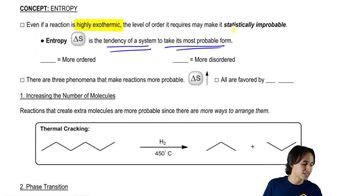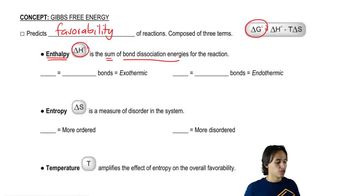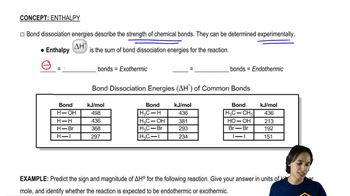Would you expect ∆S to be greater than, less than, or equal to zero in the following reactions?
a.

 Verified step by step guidance
Verified step by step guidance Verified video answer for a similar problem:
Verified video answer for a similar problem:



 2:46m
2:46mMaster Explaining what entropy is. with a bite sized video explanation from Johnny
Start learning